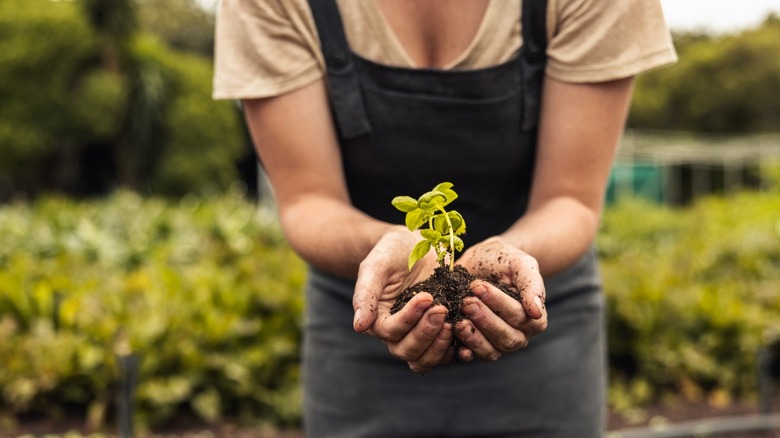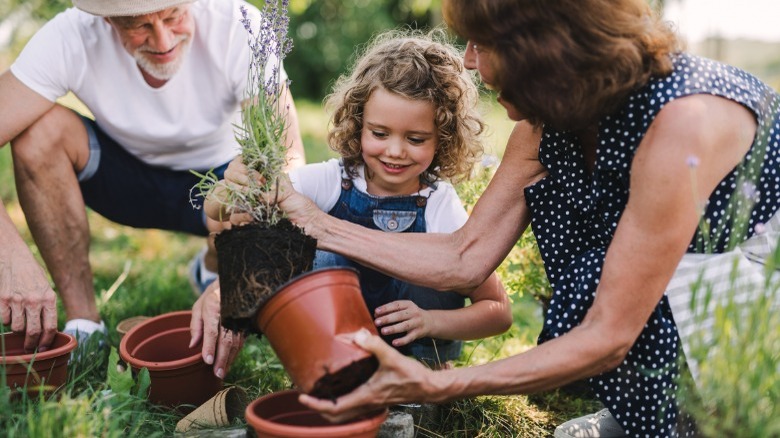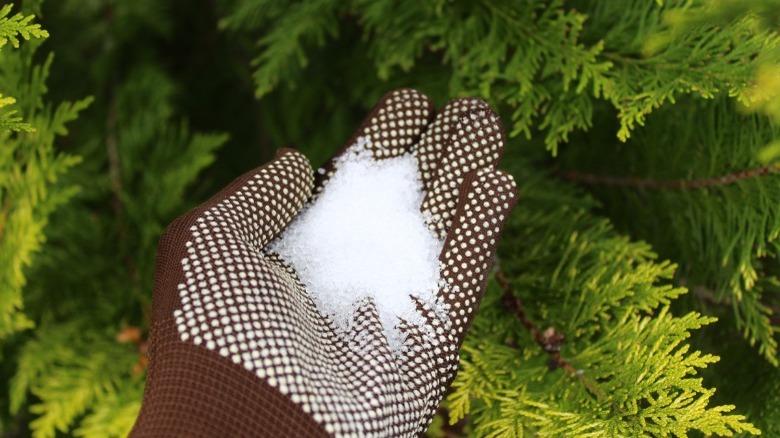How To Save Your Garden Seedlings From Transplant Shock
If you're a fledgling gardener still working on greening up your thumb, you may have experienced some problems with transplanting. Thankfully, there are a few simple steps you can take to save your garden seedlings from transplant shock. For example, when replanting seedlings, make sure they get plenty of water. It's a good idea to transplant seedlings in the evening or when there's cloud cover for a smoother transition from inside to outdoors. You can also provide coverage from the elements like wind and the hot sun by placing a bucket or barrier over your plant.
Seedlings, in particular, are like children that need a little extra protection from the elements and harshness of Mother Nature. But really, transplant shock can happen at any stage. Placing a plant in a different environment than what it's used to can cause it to shut down and go into survival mode. It may appear to be dying, the leaves can curl up or wilt, and it may even begin to turn yellow and drop leaves. However, the plant usually bounces back with a little extra TLC, and there are ways to minimize transplant shock.
Hardening them off
Hardening off your seedlings is the process of slowly acclimating them to a different environment. Some gardeners say it's unnecessary, but it's definitely something that makes the transition much smoother for your plants. It's usually best to begin this process about seven to 10 days prior to transplanting. Start by setting the seedling in a nice shady spot for two or three hours in the daytime, the middle of the day is fine. The next day you increase it by an hour. On the third day, you allow them to experience the sun in the evening for an hour after their three to four hours of shade.
It's important they are introduced to the sun only in the evening at first, and this applies even if the sun hides behind the clouds during that time. The idea is to slowly acclimate the plant to all hours of the day, a little at a time, in both shade and sunlight. Always start with the evening sun, and on day six, leave them overnight and bring them in an hour or two after the sun comes up. Skip any days it storms during the hardening-off process. The hottest part of the day should be left until the end, and transplanting should be done in the evening after they've been exposed to all hours of the day. This will greatly reduce any signs of transplant shock.
Epsom salt does the trick
Another great tip for minimizing transplant shock is using Epsom salts. This is a gardening secret many people use, and it works because Epsom salts are made of magnesium sulfate. This is an important nutrient that helps plants absorb chlorophyll and strengthens cell walls, and it's especially helpful to your seedlings when transplanting them. You can use it in preparing the soil as well as directly on the plants after replanting them.
In the soil, use 1 cup of Epsom salts per 100 square feet of soil. Perhaps an easier way to apply it is to take about one to 2 tablespoons of Epsom salts and sprinkle it into the bottom of the hole you've dug for your seedling to replant it in. This is a terrific way to give them a boost and prevent shock. Additionally, you can make a spray by using 1 tablespoon of Epsom salts per gallon of water and soak the plants after replanting them. You'll be admiring the nice shade of green on your thumb in no time!



